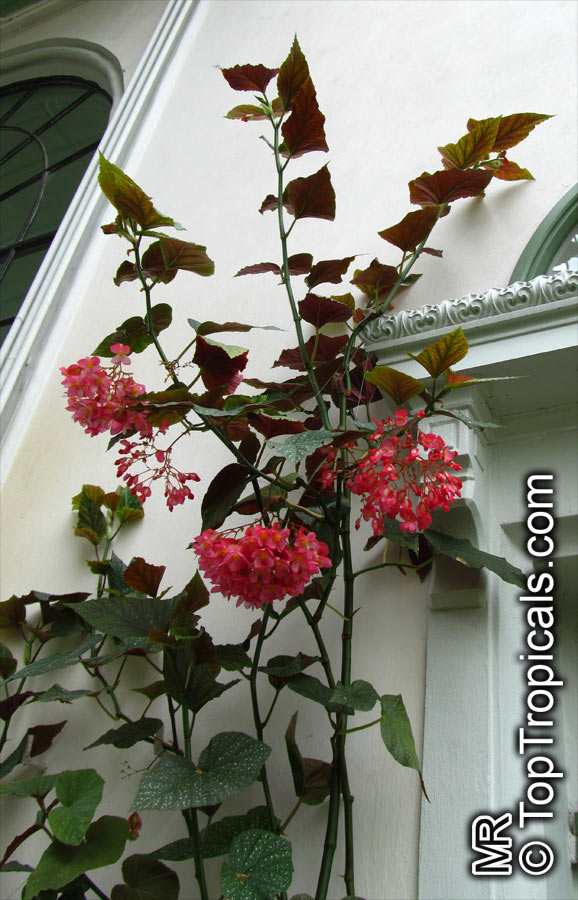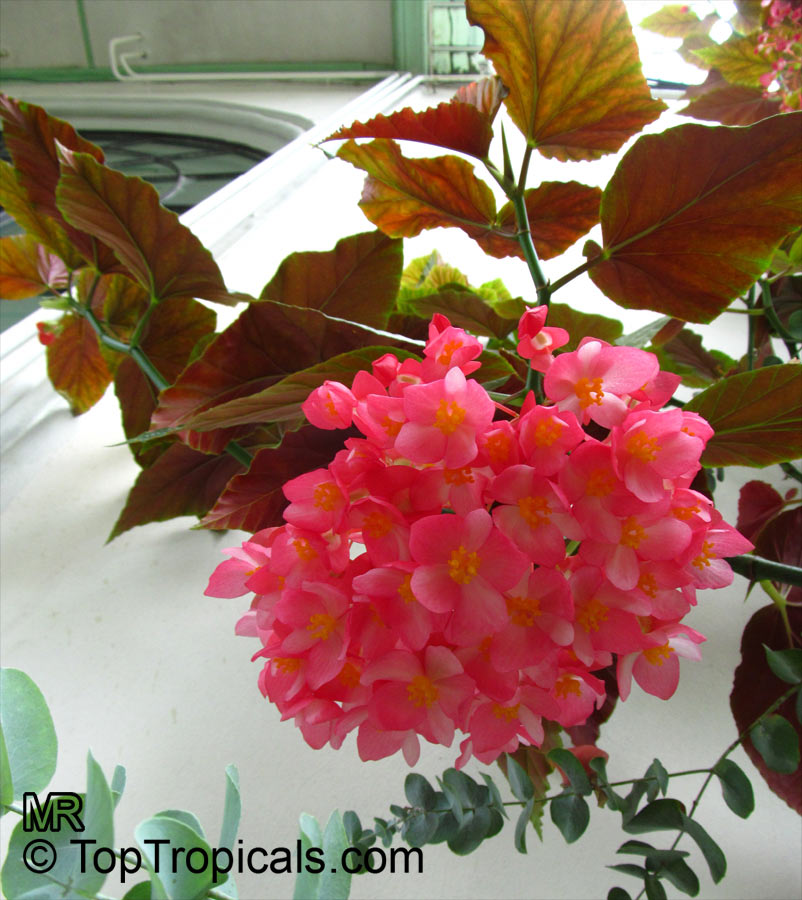Begonia corallina (Cane Begonia)
Top Tropicals Plant Encyclopedia
Botanical name: Begonia corallina
Common name: Cane Begonia
Family: Begoniaceae
Origin: Brazil





Begonia corallina (Cane Begonia) is a shrub-like plant that is native to Brazil and is evergreen in warm climates. The plant prefers a semi-shade location with regular water to prevent the leaves from scorching in full sun. Humid conditions are also ideal for cane begonia. The oval-shaped leaves of the plant are attractive, with red edges and a ribbed texture. The color of the leaves can range from deep green to purplish bronze, depending on the soil, light, and other conditions.
The most striking feature of the cane begonia is the clusters of small pink flowers that dot the foliage from summer to fall. The blooms contrast beautifully with the foliage and can last for weeks. A single cane begonia can produce hundreds of flowers.
In regions where temperatures do not dip below freezing, Begonia corallina can be grown outdoors. It thrives in USDA Hardiness zones 9-11 and prefers well-drained soil. The plant should be watered regularly to keep the soil evenly moist during the spring through fall months. Fertilizing with an all-purpose fertilizer every 4-6 weeks during the growing season is also recommended.
In colder climates, Begonia corallina is commonly grown indoors as a houseplant. The best results can be achieved by growing the plant in a potting soil mixed with perlite and keeping it in a warm, indirect light location. Watering should be done when the soil surface begins to feel dry to the touch, and the plant should be fertilized twice a month during growing period with a liquid houseplant fertilizer. Moving the plant outdoors during the summer months is recommended.
Begonia corallina is a cane type begonia that gets its name from its stems, which grow tall and woody with prominent bamboo-like joints. It is also one of the easiest begonia species to grow and a wonderful addition to any home or garden with its beautiful foliage and flowers.
Similar plants: Begonia corallina (Cane Begonia)
- Begonia ampla (Begonia)
- Begonia bipinnatifida (Fern Leaf Begonia)
- Begonia boliviensis (Bolivian Begonia)
- Begonia brevirimosa (Exotica Begonia )
- Begonia carolineifolia (Palm-leaf Begonia)
- Begonia coccinea (Angel Wing Begonia)
- Begonia conchifolia ''Red Ruby'' (Red Ruby Begonia)
- Begonia listada (Striped Begonia)
- Begonia longirostris (Begonia)
- Begonia maculata (Clown Begonia)

